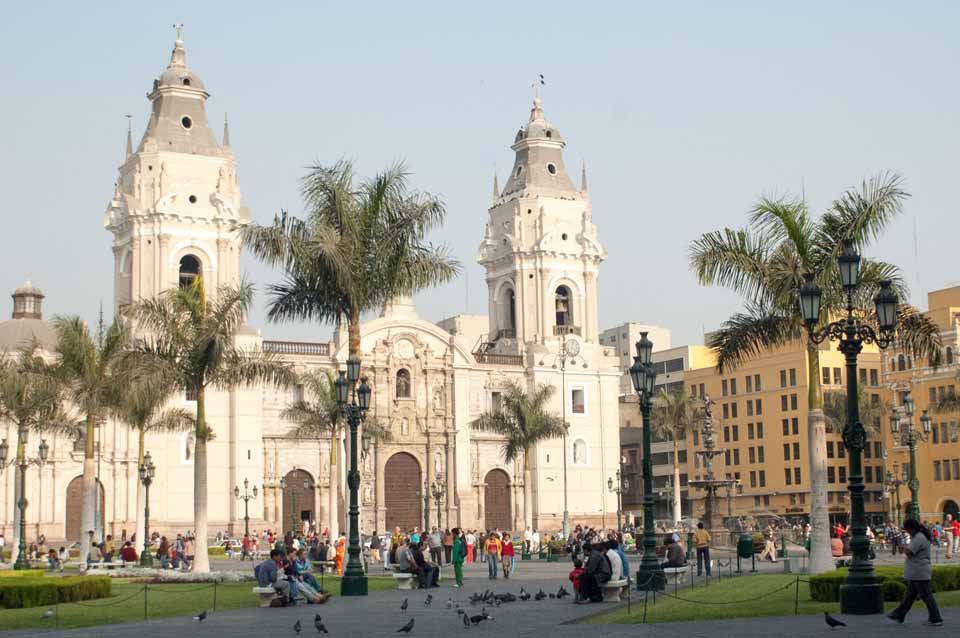
A couple of days ago, one of my friends suggested that I listen to something by the Spanish composer Juan de Araujo, who was almost an exact contemporary of the Italian composer violinist, Arcangelo Corelli. Now it is possible – indeed quite likely – that you have never heard of Juan de Araujo, for his name usually only appears in specialist text-books on the Spanish Baroque. In my fading copy of the much-revered Oxford Companion to Music, he’s is not even listed. This is surprising because Araujo eventually became recognized as the greatest South American composer of his time.
Juan was born in 1646 in the small Spanish town of Villafranca de los Barros in Extremadura. As a child he was taken by his father to Lima in Peru, which was the seat of Spanish power in colonial South America. As a young man, Juan became a student at San Marcos University of Lima and by 1670 he was nominated maestro di cappella of Lima Cathedral. Ten years later he was hired as maestro di cappella of Cuzco Cathedral. He also worked in La Plata and Panama where he was ordained to the priesthood.
As maestro di cappella in his various posts, he was responsible for every aspect of music in the cathedral. He became a fine choral trainer and during his lifetime established several important boy choirs for which he wrote much of the music. Although he composed some major works in a conventional Baroque style, he’s known largely for his skill in blending Baroque elements with those of the local folk music. Araujo must have found the Peruvian music stimulating because he composed over a hundred villancicos and jácaras written for all sorts of combinations of voices and instruments. During the colonial period of South America, villancicos were popular-style songs which were based on love poems, Spanish baroque poetry, folk songs or even religious texts. They were sung in the vernacular and usually had an alternating refrain and verse.
While Araujo used the traditional form of the villancico, he also enjoyed using innovative and unusual effects, employing lively syncopation to provide rhythmic drive. Araujo displayed a good deal of humour in his music too and the villancicos are often accompanied by rhythmic percussion instruments or harp.
During the eighteenth century, it was common practice throughout Latin America for church services to intersperse popular music with the more conservative liturgical repertoire. This is a lively celebratory Christmas song which shows the extraordinary musical style of Juan de Araujo. At first sight, the performers look like a conventional baroque ensemble but the music also features guitars and percussion. One of the guitars plays exciting, syncopated cross-rhythms bringing a genuine Peruvian flavour to the music. The text is in Spanish and the title means “Go now! (To play, to sing, to dance; sing with all your voice!)” Notice how the work is built up using a repeated chorus, with short contrasting verses sung by soloists. These are fascinating because in the verses Araujo uses unexpected cross-rhythms which cut against the basic beat. Some of the words are hilarious, though you’ll need pretty good Spanish to appreciate the humour.
Antonio de Salazar (c.1650-1715): Tarara, Tarara, qui yo soy Antonyio. Kammi Estelle, Kelli Shircliffe (sop); Richard Savino (lute); Stephen Tobin (perc) (Duration: 02:49; Video: 720p)
Unlike the Spanish Juan de Araujo, Salazar was one of the locals, born in the New World. To be more precise, he was born in Puebla de los Angeles, which today is the fourth largest city in Mexico. In 1698 he was appointed maestro di cappella of the chapel of Puebla Cathedral but later moved to the more prestigious post of maestro di cappella at the imposing Mexico City Cathedral. Like Araujo, his duties included writing for the cathedral choir but it seems his religious works were somewhat conservative and often used a strict contrapuntal style which even in Mexico must have seemed a bit old-fashioned. But Salazar also composed some much lighter pieces including Christmas villancicos, which used additional percussion and sometimes guitars. This villancico is a delightful Christmas nativity song and the title means “Tarará tarará, it’s me Antón (I am black by birth and I sing the most and best”). The music uses many cross-rhythms though the melody remains fairly simple throughout. It tells a charming simple story of a local boy who’s going to Bethlehem to dance for the new-born Jesus.
 |
 |
 |





